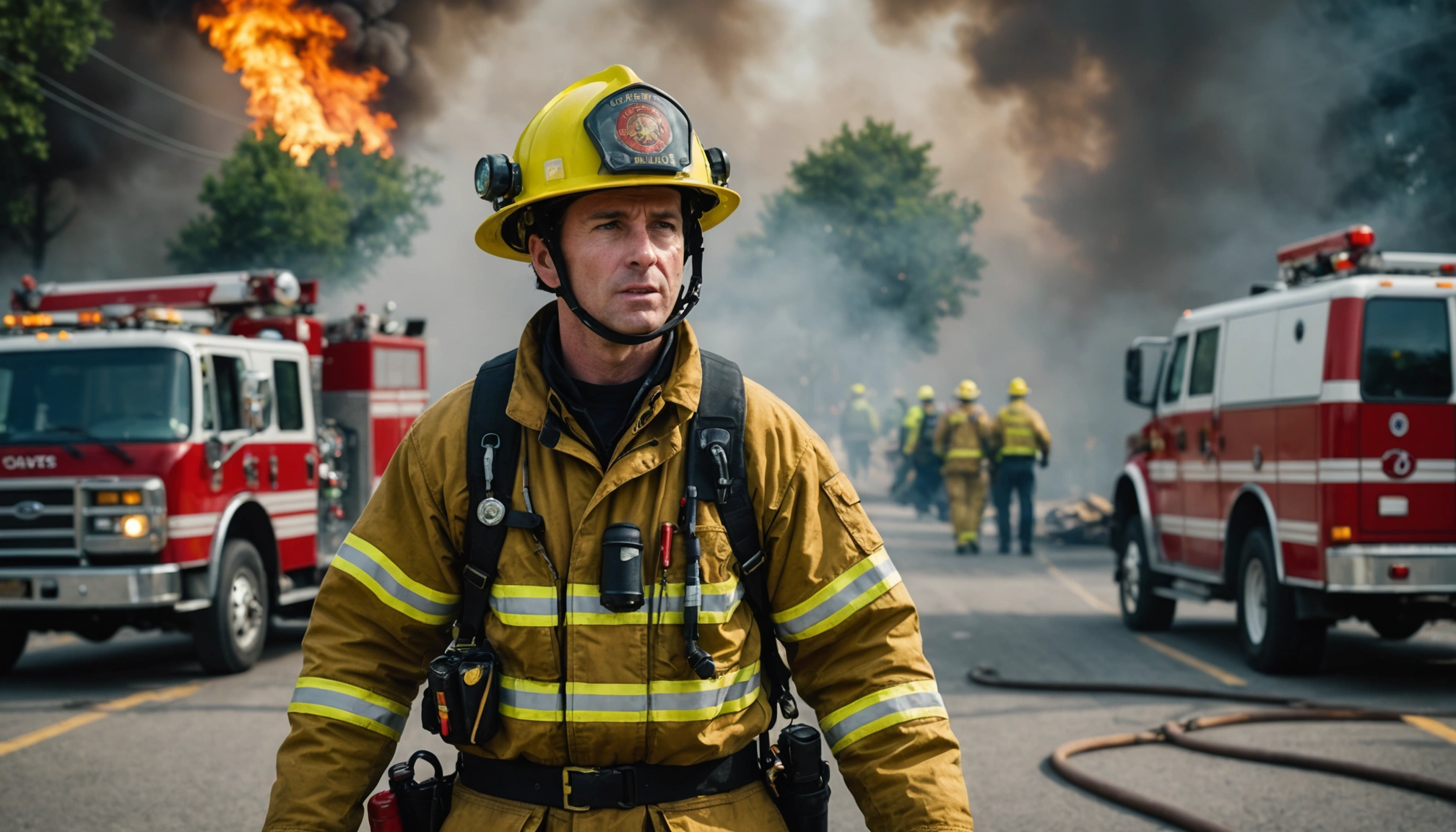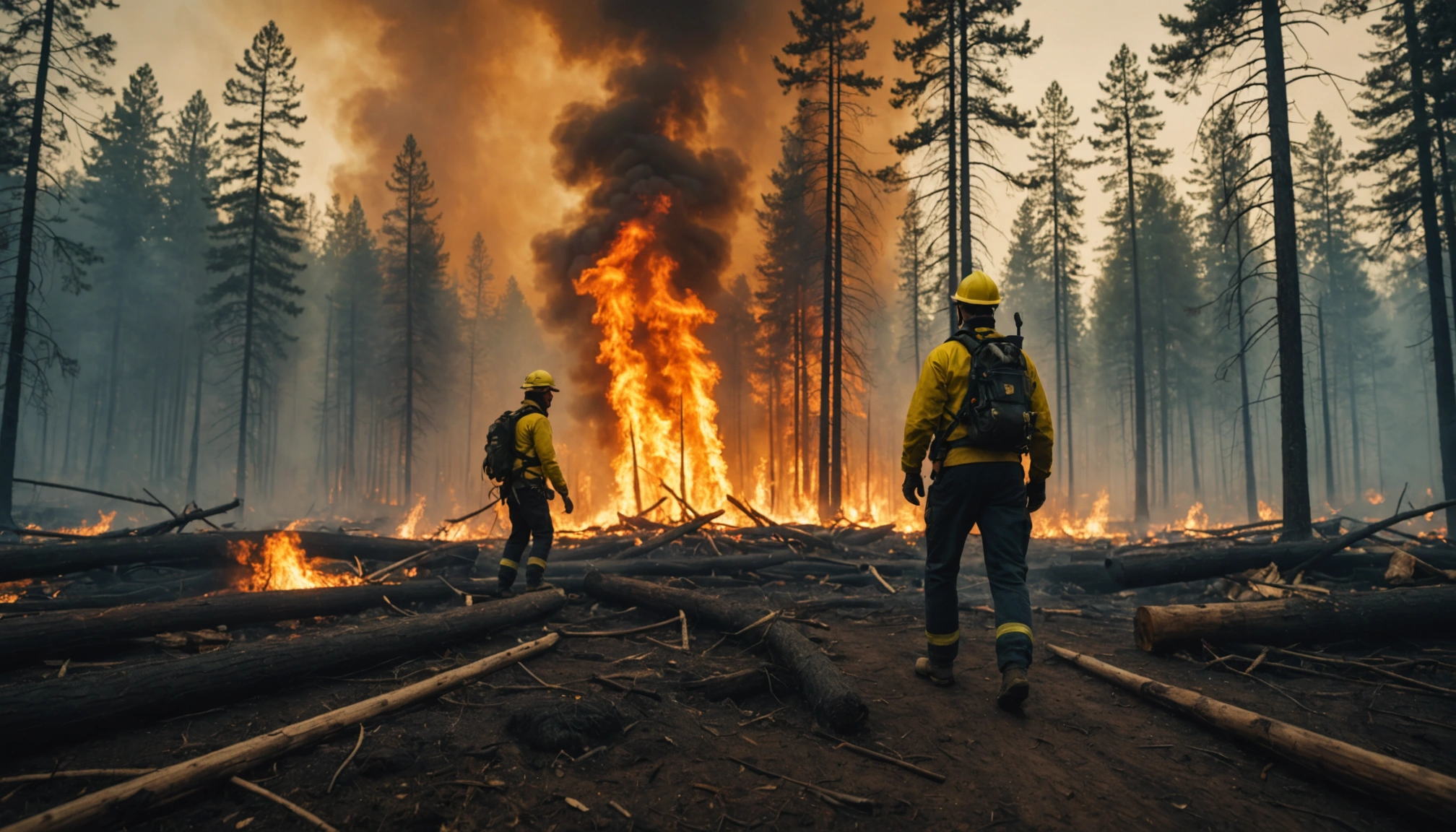Firefighting in a Warming World: How Rising Temperatures Intensify the Heat on First Responders

Firefighters face increasingly challenging conditions as global temperatures continue to rise. The combination of extreme heat, heavy protective gear, and the strenuous nature of the job creates a dangerous environment that can lead to heat stress, exhaustion, and even cardiac arrest. Climate change is exacerbating these risks, leading to longer and more intense fire seasons, and demanding greater resilience from those on the front lines.
The Rising Threat of Wildfires
Climate change is a key factor in the increasing risk and extent of wildfires, particularly in the Western United States. Warmer temperatures, prolonged droughts, and changes in precipitation patterns create perfect conditions for fires to ignite and spread rapidly. A 1 degree Celsius temperature increase can increase the median burned area per year as much as 600 percent in some types of forests. The wildfire season, once limited to late summer and early fall, has now become a nearly year-round concern. The average size of wildfires has more than doubled since the 1980s, stretching firefighting resources and increasing the risk to firefighter health and safety.
The southeastern United States also faces increased fire risk, with modeling suggesting a potential 30 percent increase from 2011 in the area burned by lightning-ignited wildfire by 2060. Once a fire starts, warmer temperatures and drier conditions make them harder to extinguish. These conditions also contribute to the spread of insects like the mountain pine beetle, which weaken or kill trees, adding to the available fuel.
The Physiological Toll of Heat on Firefighters
Firefighting is inherently strenuous, requiring strength and endurance to navigate burning structures, carry heavy equipment, and perform rescues. Firefighters often work in high-heat environments while wearing personal protective equipment (PPE) that adds to the heat burden. PPE, which can weigh over 45 kg (100 lbs), is essential for protection but inhibits heat dissipation, leading to a rise in core body temperature. A fire exposure can increase core temperature by 0.6 - 3.2°C, with average maximum temperatures reaching 40.1°C.
The body relies on sweat loss to cool down, but PPE and environmental conditions can impair evaporative heat loss, leading to an "uncompensable heat stress situation" where the body continually stores heat. This can cause dehydration, heat exhaustion, and heat stroke, which can be fatal. Cumulative heat stress has a negative effect on the cardiovascular system and can lead to cardiac arrest, the leading cause of firefighter line-of-duty deaths.
Other factors can decrease a firefighter's heat tolerance, including lower V̇O2max, underlying illnesses, skin grafts/burnt skin, previous episodes of heat-related illness, sleep deprivation, alcohol intake, and tattooed skin. These factors can impair thermoregulation and sweating capacity, placing a larger burden on the firefighter.
Adapting Training and Protocols
Fire departments are adapting training programs and safety protocols to address the increasing challenges posed by rising temperatures. These adaptations include:
- Heat Acclimation: Gradually increasing tolerance to heat by working out in warmer conditions or using a sauna post-workout. This helps the body sweat more and start sweating sooner. For physically fit firefighters, 14 days of regular heat exposure can be sufficient for acclimatization.
- Comprehensive Physical Fitness: Incorporating comprehensive physical fitness training, including cardiovascular conditioning, strength training, and functional training, to improve overall fitness and resilience to heat stress.
- Hydration and Electrolyte Replacement: Emphasizing proper hydration strategies and maintaining electrolyte balance to prevent dehydration and support performance in hot conditions. Drinking cool, dilute fluids at a rate of at least 8 ounces every 15 minutes or 1 liter(quart)/hour is recommended.
- Modified Training Schedules: Adjusting training schedules to avoid the hottest parts of the day and incorporating more frequent breaks for rest and hydration.
- Rehabilitation Protocols: Implementing robust rehabilitation protocols on incident scenes, including medical monitoring, hydration stations, and cooling stations where PPE can be removed to allow the body to recover.
- Monitoring and Awareness: Using tools like the Wet Bulb Globe Temperature (WBGT) index to measure heat stress and guide rehab policies and procedures on incident scenes. Encouraging firefighters to monitor themselves for symptoms of heat cramps, heat stroke, and heat exhaustion.
The Role of Policy and Technology
Beyond training and protocols, policy changes and technological advancements are also crucial for protecting firefighters in a warming world. These include:
- Increased Resources for Firefighting and Prevention: Allocating more resources to firefighting and fire prevention efforts, including funding for equipment, training, and personnel.
- Climate-Focused Strategies: Implementing climate-focused strategies such as prescribed burns and fuel thinning to reduce flammable materials and prevent larger fires from igniting.
- Support for Mental Health: Providing mental health resources to address the trauma and stress of prolonged fire seasons.
- Lightweight and Breathable PPE: Investing in lightweight, breathable turnout gear that reduces heat buildup while maintaining protection.
- Cooling Technologies: Utilizing cooling vests and personal heat sensors to regulate body temperature and alert firefighters when their body temperature reaches dangerous levels.
- Improved Infrastructure: Addressing fire station building and mechanical issues, including redundant power supply, to ensure operational readiness during extreme weather events.
A Call to Action
The challenges faced by firefighters are only set to intensify as climate change continues to drive up temperatures and increase the frequency and severity of wildfires and other extreme weather events. Protecting these first responders requires a multi-faceted approach that includes enhanced training, updated safety protocols, policy changes, and technological advancements. By prioritizing firefighter health and well-being, communities can ensure that those on the front lines are equipped to handle the growing threats posed by a warming world.
Related Articles

Iberian Peninsula Blackout: A Wake-Up Call for Renewable Energy Infrastructure

